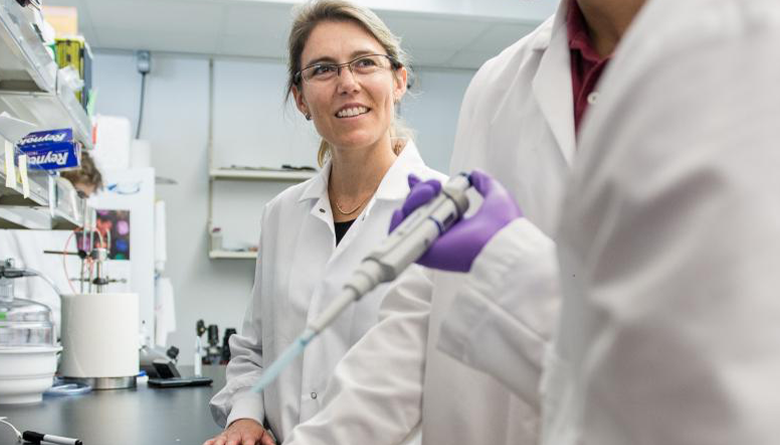By Torie Wells
A team of mechanical engineers has demonstrated a new technique for creating a more complex in vitro model for studying tumors, or one occurring outside an organism.
When cancer cells detach, migrate, and invade surrounding tissue and vasculature, the cancer is spread from a primary tumor to other organs, which is likely to lead to a higher mortality rate. Collagen is the main protein that makes up the external structure of a cell, known as the extracellular matrix, and the stiffness of that structure gives the tumor a structural cue that contributes to cancer progression. Creating a model that can mimic that tunable stiffness is important to better understand how cancer cells migrate and how to stop them before they invade other tissue.
“We’ve come closer to the architecture of how collagen is organized in the tissue than any other collagen-based model to date,” said Kristen Mills, an assistant professor of mechanical, aerospace, and nuclear engineering at Rensselaer Polytechnic Institute.
Researchers have also found that within an organism — in vivo — the architecture of the collagen extracellular matrix affects cancer progression. Collagen forms fibrous bundles upon which cancer cells migrate out of the tumor to invade other tissue. Mills said that during their formation, the bundles take on a specific size and structure that are thought to allow cells to spread more easily. That process is not fully understood at this point, which makes creating a model that will mimic that structure more closely important.
“We noticed those fibrous structures are usually much larger than what’s been created in the lab, and so the goal of this is to create better models of the tumor-associated extracellular matrix,” said Xiangyu Gong, who earned his Ph.D. in mechanical engineering in the Mills Lab at Rensselaer and is now a postdoctoral researcher at Yale University.
The team found the right combination of ionic strength and temperature to induce collagen — that has been isolated from tissues — to form micron-scale bundles instead of the nanoscale fibrous gels that are typically used in cancer research. Then, they created a microfluidic channel to align the bundles, much as they would be within the body.
This allowed the researchers to study how the cancer cells interact with the collagen bundles, with a size similar to what would be seen in vivo.
This new approach enabled the researchers to combine their newly created collagen bundles with a type of gel whose stiffness can be tuned, in order to provide a more accurate and controllable model that mimics both the structure of the tissue within the body and the mechanical cues that communicate with a tumor.
Mills and Gong hope this research sends a broader message about the importance of using complex and holistic models that more closely mimic the systemic conditions tumor cells encounter in the body.




